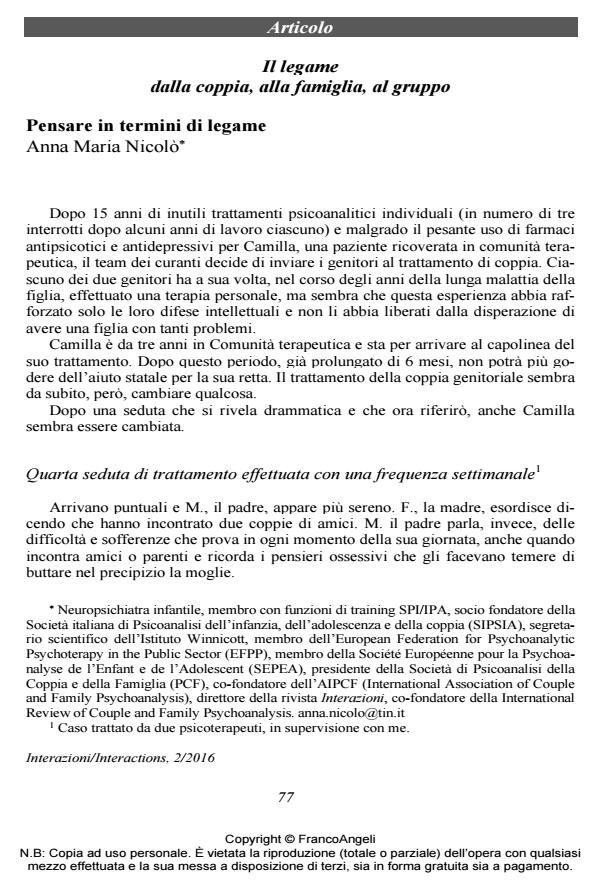Thinking in terms of link
Journal title INTERAZIONI
Author/s Anna Maria Nicolò
Publishing Year 2016 Issue 2016/2
Language Italian Pages 13 P. 77-89 File size 176 KB
DOI 10.3280/INT2016-002008
DOI is like a bar code for intellectual property: to have more infomation
click here
Below, you can see the article first page
If you want to buy this article in PDF format, you can do it, following the instructions to buy download credits

FrancoAngeli is member of Publishers International Linking Association, Inc (PILA), a not-for-profit association which run the CrossRef service enabling links to and from online scholarly content.
Through discussion of a clinical case, the Author analyzes the functioning of the family. There is in addition to an individual unconscious, even a complex and multidimensional world, created by the family as a group that shares a history, a space and a time, and the links that each member from the beginning of the life co-constructed with the others. Each family has its own identity and its shared functioning that affects every single member. This is the reason why, in all cases, the Author supports the importance of focusing the work the clinical work on the relationship between the intrapsychic and the interpersonal. A discussion of the link’s concept highlights the richness of this point of view in the psychotherapeutic work.
Keywords: Family, link, intrapsychic, interpersonal
- L'estraneo e il familiare nella clinica psicoanalitica con l'individuo, la coppia e la famiglia. Intervista a Carles Perez-Testor, Philippe Robert, Sonia Kleiman e Andrea Narracci Daniela Lucarelli, Diana Norsa, in INTERAZIONI 1/2021 pp.137
DOI: 10.3280/INT2021-001011
Anna Maria Nicolò, Pensare in termini di legame in "INTERAZIONI" 2/2016, pp 77-89, DOI: 10.3280/INT2016-002008